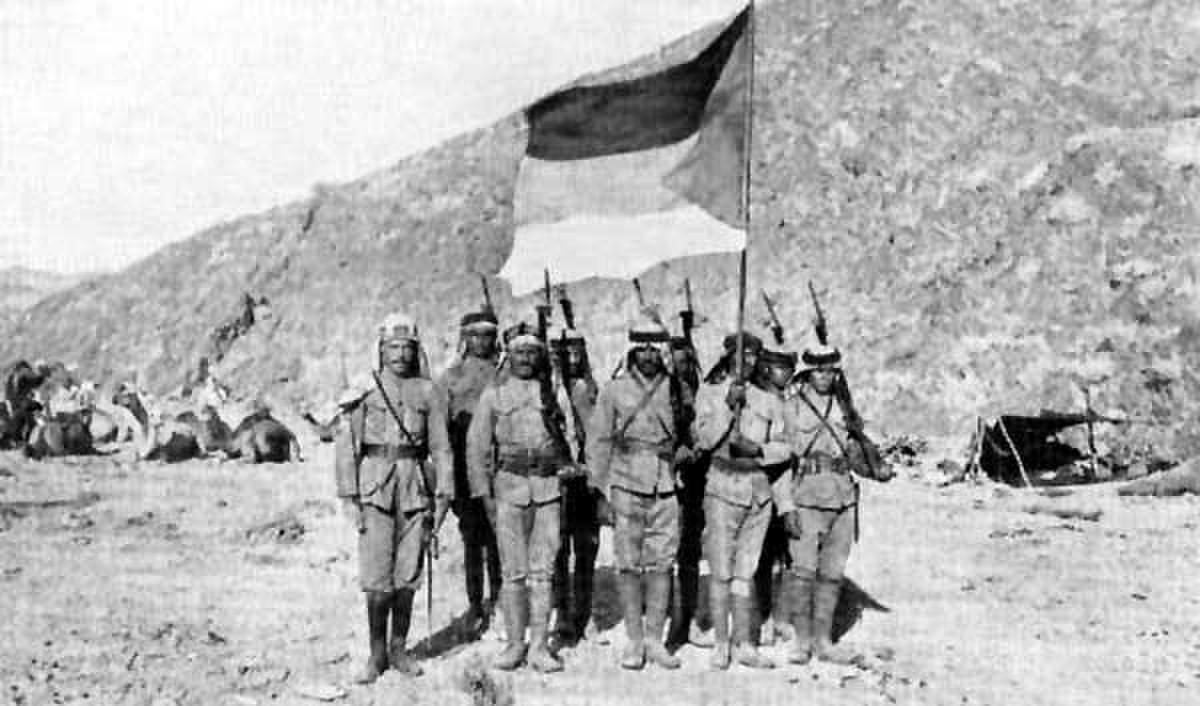
Arab Revolt
Middle EastIn the early 20th century, the Ottoman Empire maintained nominal suzerainty over most of the Arabian Peninsula. This region was a mosaic of tribal rulers, including the Al Saud, who returned from exile in 1902. The Sharif of Mecca held a prominent position, ruling the Hejaz.[33]
In 1916, Hussein bin Ali, the Sharif of Mecca, initiated the Arab Revolt against the Ottoman Empire. Supported by Britain and France,[34] then at war with the Ottomans in World War I, the revolt aimed to achieve Arab independence and establish a unified Arab state from Aleppo in Syria to Aden in Yemen.
The Arab army, comprising Bedouin and others from across the peninsula, did not include the Al Saud and their allies, due to longstanding rivalries with the Sharifs of Mecca and their focus on defeating the Al Rashid in the interior. Despite not achieving its goal of a unified Arab state, the revolt played a significant role in the Middle-Eastern Front, tying down Ottoman troops and contributing to the Ottoman defeat in World War I.[33]
The partitioning of the Ottoman Empire post-World War I saw Britain and France backtrack on promises to Hussein for a pan-Arab state. Although Hussein was recognized as King of the Hejaz, Britain eventually shifted its support to the Al Saud, leaving Hussein diplomatically and militarily isolated. Consequently, the Arab Revolt did not result in the envisioned pan-Arab state but did contribute to freeing Arabia from Ottoman control.[35]
